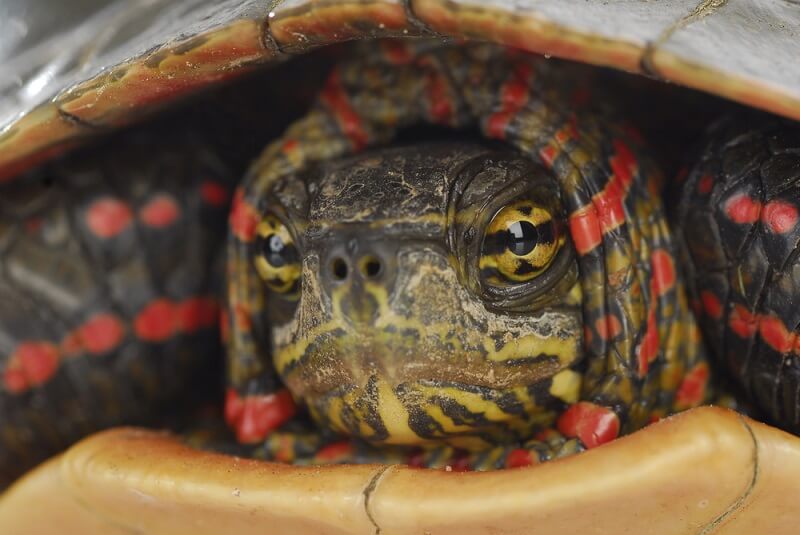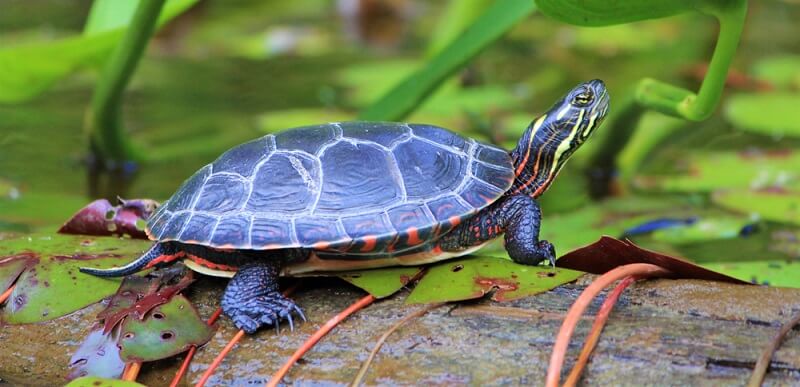
Painted turtles are the most common species of aquatic turtle in North America. This aquatic turtle spends most of its time in ponds and slow-moving streams. Spanning from Canada to northern Mexico, the painted turtle stands out with its yellow- and red-striped skin and yellow to red underbelly. The painted turtle – which is present in the fossil record up to 15 million years ago – has long been known to man. Native American cultures have many myths about the painted turtle, and it is now the official reptile of 4 U.S. states: Vermont, Michigan, Illinois, and Colorado. This speaks to how widespread painted turtles have been, and continue to be, across North America. Painted turtles eat a variety of aquatic vegetation, insects, and small dead fish and other organic matter they can scavenge. While they typically feed underwater, most painted turtles enjoy quite a bit of time basking in the sun every day. There are 4 distinct subspecies of painted turtle: Eastern, Southern, Western, and Midland. Their ranges overlap slightly and they can interbreed easily, so it can be difficult to tell them apart. Though the research study is ongoing, the oldest painted turtle in the wild is over 55 years old! Since females can lay up to 12 eggs each season, a single female painted turtle can be a prolific breeder. Some local populations decline when they are overharvested for the pet or scientific industries, but overall painted turtles do not face a high risk of extinction. Some people do keep painted turtles as pets, though it seems that painted turtles do not like to be handled and can easily become stressed out. That being said, painted turtles do make a great addition to a backyard pond – given they have the resources and ecosystem to properly survive. In captivity, these turtles eat a variety of different insects as well as aquatic vegetation. While the juveniles prefer insects to greens, adults will need to eat more vegetation than insects. Given enough space and the proper care, painted turtles can grow to over 10 inches long over the course of a lifespan that lasts several decades! So, if you want a painted turtle as a pet, make sure you are ready for a life-long commitment! While painted turtles have been enjoyed by ancient tribal groups and modern North Americans alike, they actually make great examples for some interesting biological concepts! When a male painted turtle wants to mate with a female, he approaches her with his head out and neck exposed. If she likes him, she will “swipe right” by gently swiping the side of his face with her foot. He will swipe back, signaling he is also ready to mate. Once he knows she is interested, the game is on. He quickly dives into the pond and swims to an open space on the bottom, hoping she will follow. If she does not, he will return to her several times until he can entice her into the water. Once she concedes, she will follow him to the bottom of the pond to mate. While this mating ritual may seem complex, it is a pretty typical example of how courtship behaviors play out in nature. Many species, across the whole animal kingdom, display intricate and unique mating rituals. Birds often engage in elaborate dances, certain species of rat collect shiny objects for their loved ones, and frogs have evolved throat sacks that resonate at species-specific tones! Researchers have found that painted turtles have an amazing ability to find their way back to specific locations. The turtles likely use a complex array of senses to find their way. They may recognize specific scents, currents, landmarks, and other unique features of a landscape. In fact, some studies have shown that painted turtles are able to find their way home when released over 4 miles from where they were collected! This helps female turtles return to a familiar nest site year after year. While this is an amazing feat for a turtle that is less than 1 foot long, it does get the turtles into a lot of trouble. Many painted turtles travel between various water sources throughout the seasons, often finding themselves on a roadway. Sometimes, if the road is close to a source of water, people assume that the turtles are lost and place them back near the water source. However, if they were crossing the road in a direction leaving the obvious water source, the turtle was probably headed somewhere else important. If you find a turtle crossing a roadway and can stop safely, you can help the turtle out by moving them in the direction they are going as far away from the roadway as possible! The painted turtle obviously gets its name from the yellow and red stripes that seem to burst forth from the shell. Though they look as if someone intentionally painted these turtles to look interesting, the patterns likely serve several purposes. Animals become “colorful” for many reasons, ranging from the food that they eat to the need for camouflage. To determine why painted turtles might present such striking colors, we have to look at how these colors and patterns may help them survive and reproduce. While the exact reason these turtles evolved such striking coloration remains a mystery, there are several good theories. The coloration may be a form of camouflage, helping the turtles blend in as they hunt small insects and fish. Since even their eyes have distinct patterning, this is a viable theory. Or, the coloration could be from the food the turtles are eating – a theory supported by the fact that color changes happen when a turtle’s diet changes.
Kingdom
Animalia
Phylum
Chordata
Class
Reptilia
Order
Testudines
Family
Cryptodira
Genus
Chrysemys
Species
Chrysemys picta
Niche
Omnivore
Length
3-10 in (10-25 cm)
Weight
About 1 lb (300-500g)
Lifespan
50+ years in the wild
Social Structure
Solitary or in small groups
Conservation Status
Least Concern
Preferred Habitat
Ponds, slowly moving streams and rivers, swampy areas in North America
Average Clutch Size
5-12 eggs
Main Prey Species
Duckweed, algae, insects, small fish
Predators
Foxes, snakes, birds, larger turtles, raccoons, humans
The Basics
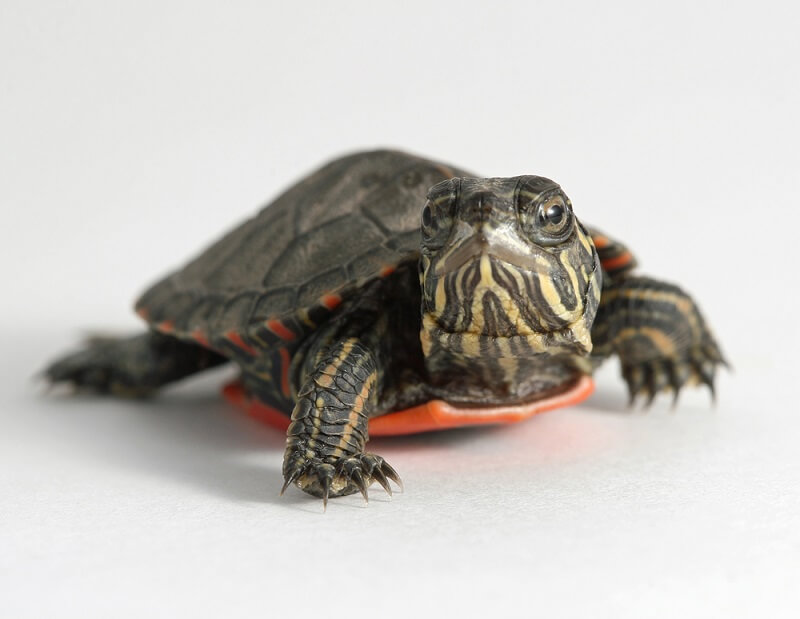
Painted Turtle as a Pet?
Interesting Insights from the Painted Turtle!
Courtship Behaviors
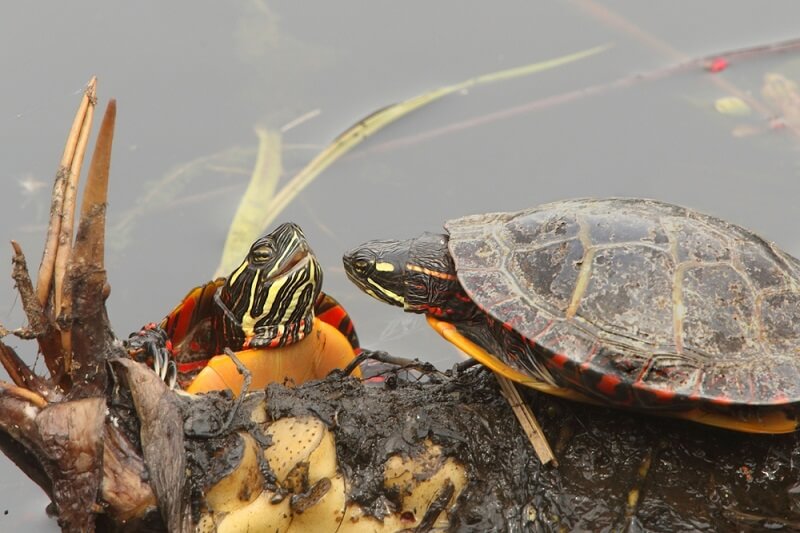
Animal Navigation
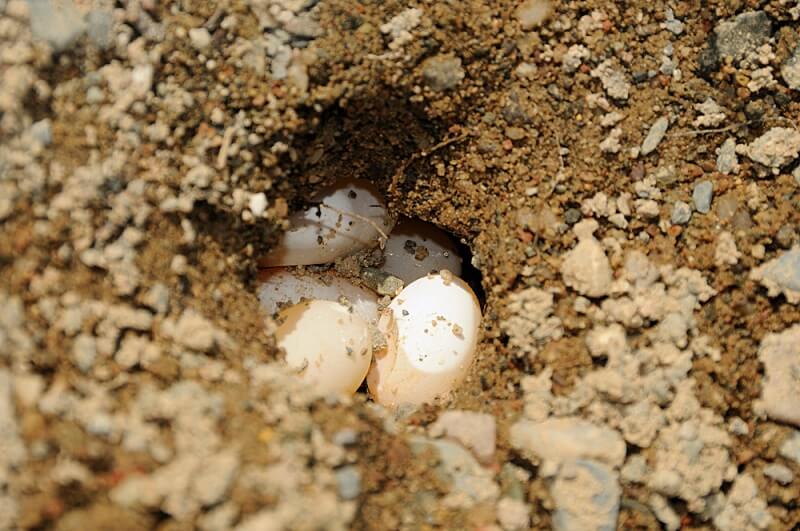
Multicolored Skin
